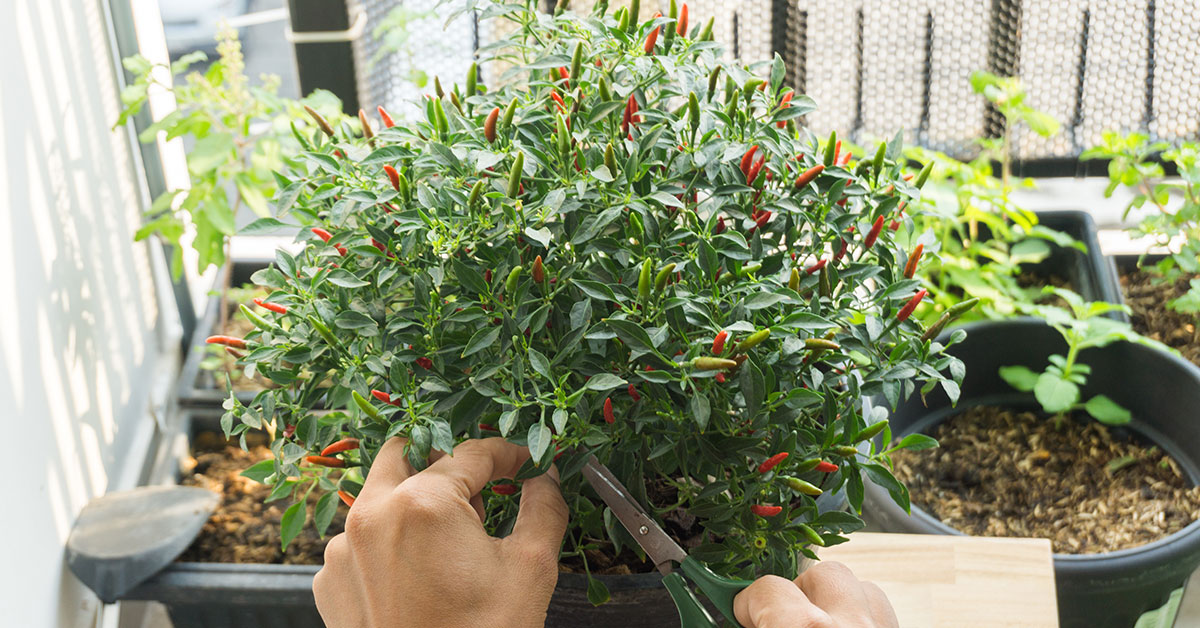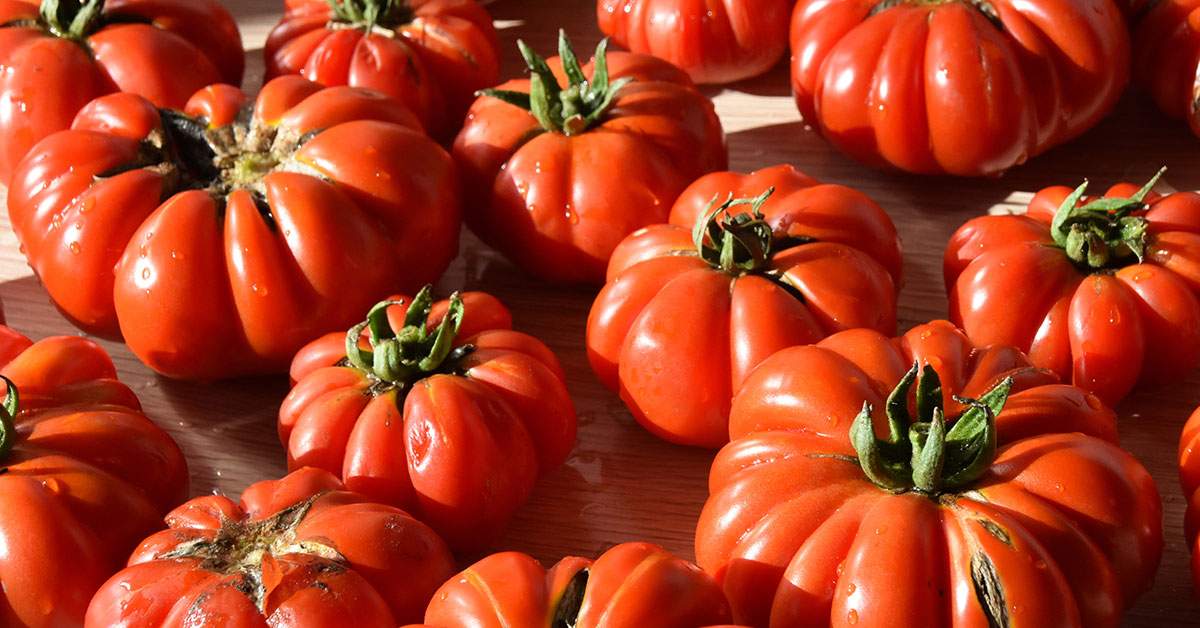The Thai pepper, also known as bird’s eye chili, is a small but powerful chili pepper that is native to Southeast Asia. It can be found in many Thai dishes, giving them a spicy kick that is loved by many. But the Thai pepper plant is not just useful in the kitchen – it is also popular for its medicinal properties and is used in traditional medicine to treat various ailments. In this blog post, we will explore the many benefits and uses of the Thai pepper plant, as well as how to grow and care for your own Thai pepper plant at home.
What is a Thai pepper?
Thai peppers, also known as bird’s eye chili, is a small chili pepper that is commonly used in Thai and other Southeast Asian cuisines. It is a member of the Capsicum family and is known for its spicy taste and bright red color. The plant itself can grow up to 3 feet tall and produces small, cone-shaped peppers that are roughly an inch long. These peppers are typically harvested when they are matured and bright red in color.
Thai pepper plants are relatively easy to grow and can be cultivated both indoors and outdoors. They prefer soil that is well-drained and fertile, and require regular watering to keep the soil moist. They also need plenty of sunlight and warmth to thrive, making them an ideal choice for gardeners in warm climates.
In addition to their culinary uses, Thai pepper plants are also believed to have medicinal properties. They contain capsaicin, a compound that has been shown to have anti-inflammatory and pain-relieving effects. Some research suggests that capsaicin may also have benefits for heart health and weight loss.
Overall, Thai pepper plants are a versatile and flavorful addition to any garden or kitchen. Whether you’re a fan of spicy food or just looking to add some color and flavor to your cooking, these small but mighty peppers are definitely worth trying out.
What does a Thai pepper taste like?
In terms of flavor, Thai peppers are often described as having a slightly fruity and citrusy taste with a strong spicy kick.
When eaten raw, Thai peppers have a sharp and intense heat that can be overpowering for some. However, when cooked into dishes, the heat mellows out and blends well with other flavors. Thai peppers are commonly used in Thai cuisine, particularly in spicy soups, curries, and stir-fry dishes.
Despite its small size, the Thai pepper plant can produce a large number of peppers, making it a popular choice among home gardeners and farmers alike. Whether you’re a fan of spicy foods or just curious about trying something new, the Thai pepper plant is definitely worth exploring.
How to start Thai pepper seeds
Thai pepper plants are a popular choice among home gardeners due to their unique flavor and spiciness. If you are interested in growing Thai pepper plants in your own garden, the first step is to start them from seed. Here are some tips on how to get started.
- Choose the right seeds – Look for high-quality Thai pepper seeds from a reputable supplier. You can also save seeds from mature peppers that you have purchased or grown in previous years.
- Start indoors – Thai pepper seeds need warmth and moisture to germinate. Start by planting them indoors in small pots or trays filled with seed starting mix. Plant the seeds about ¼ inch deep, cover with soil and lightly water.
- Provide light and warmth – Keep the seedlings in a warm and bright location, such as a sunny windowsill or under grow lights. Make sure to keep the soil moist but not too wet, as overly wet soil can lead to damping off.
- Transplant seedlings – Once the seedlings have grown to about 2-3 inches tall and have developed a few sets of leaves, they are ready to be transplanted into larger pots or directly into the garden. If transplanting into the garden, wait until after the last frost in your area.
By following these simple steps, you can start your own Thai pepper plants from seed and enjoy a bountiful harvest of spicy, flavorful peppers.
How to grow Thai peppers
Thai peppers are a popular ingredient in Thai cuisine, and they are also known for their spicy flavor. Growing Thai pepper plants at home can be a rewarding experience, and it’s relatively easy to do. In this section, we’ll cover the basics of Thai pepper plant cultivation.
Planting Thai Pepper Plants
To start growing Thai pepper plants, you’ll need to plant the seeds in a pot or container. Choose a container that’s at least 12 inches in diameter and has drainage holes at the bottom. Fill the container with a well-draining soil mix, and plant the seeds about 1/4 inch deep. Water the soil thoroughly, and place the container in a warm, sunny location.
Watering Thai Pepper Plants
Thai pepper plants need consistent moisture, but they don’t like to be waterlogged. Water the plants when the soil feels dry to the touch, and make sure to water deeply. Avoid getting the leaves wet, as this can lead to fungal diseases.
Fertilizing Thai Pepper Plants
To help your Thai pepper plants grow strong and healthy, you’ll need to fertilize them regularly. Use a balanced fertilizer that’s high in potassium, phosphorus, and nitrogen. Apply the fertilizer every two weeks during the growing season, and follow the manufacturer’s instructions carefully.
Pruning Thai Pepper Plants
Pruning your Thai pepper plants can help them produce more fruit and stay healthy. Pinch off any new growth that emerges from the main stem, and remove any dead or yellowing leaves. You can also trim back the branches to promote bushier growth.
When to harvest Thai peppers
Harvesting Thai pepper plants is an exciting part of growing them. These plants produce small, fiery peppers that are well-loved in Thai cuisine and can be used in a variety of dishes. Knowing when and how to harvest Thai pepper plants will ensure that you get the best yield and quality of peppers.
The ideal time to harvest Thai pepper plants is when the peppers have reached full maturity and have developed their characteristic bright red color. This usually occurs between 70 to 90 days after planting, depending on the variety of Thai pepper plant you are growing. It is important to wait until the peppers are fully ripe before harvesting, as this is when they are at their spiciest and most flavorful.
Harvesting Thai pepper plants is a relatively easy process. You will need a pair of sharp scissors or pruning shears to cut the peppers off the plant. When harvesting, it is important to handle the peppers carefully as they can be very spicy and may irritate the skin or eyes.
To harvest the peppers, simply cut them off the plant at the stem. Be sure to leave a small portion of the stem on the pepper to prevent it from rotting. It is best to harvest the peppers in the morning when they are cool and dry, as this will help preserve their flavor and quality.
Storing harvested peppers
Once you have harvested your Thai peppers, you can store them in a variety of ways. If you plan to use them immediately, you can store them in the refrigerator for up to a week. To extend their shelf life, you can also dry them or freeze them. Drying the peppers can take anywhere from a few days to a few weeks depending on the method you use.
In conclusion, harvesting Thai pepper plants is a fun and rewarding experience. Knowing when and how to harvest will ensure that you get the best yield and quality of peppers. With a little care and attention, you can enjoy the spicy goodness of Thai peppers in your cooking all year round.
Common problems
Peppers are generally resilient plants, but they can encounter a few issues during the growing season. Understanding these common problems and their solutions can help you maintain healthy pepper plants and maximize your harvest. Here’s an overview of some common issues and how to fix them:
- Poor or Slow Germination: If you’re experiencing low germination rates or slow germination, check the freshness and quality of your seeds. Using fresh, high-quality seeds can improve germination. Maintain consistent soil moisture by watering lightly and frequently, without overwatering. Providing optimal temperature conditions for germination, typically around 75-85°F (24-29°C), can also enhance germination rates.
- Insufficient Sunlight: Peppers thrive in full sunlight, so inadequate light can result in weak plants and reduced yields. Ensure your pepper plants receive at least 6-8 hours of direct sunlight each day. If growing indoors, consider using reflective mulch or supplemental grow lights to provide sufficient light intensity.
- Inadequate Watering: Proper watering is crucial for pepper plants. Water deeply and consistently, aiming to keep the soil evenly moist. Avoid overwatering, which can lead to root rot, and underwatering, which can cause stress and stunted growth. Applying mulch around the base of plants can help retain moisture and regulate soil temperature.
- Nutrient Deficiencies: Nutrient imbalances can manifest as yellowing leaves, poor growth, or reduced fruiting. Test your soil to identify any nutrient deficiencies and address them accordingly. Use organic or balanced fertilizers to provide essential nutrients. Pay attention to phosphorus, potassium, and nitrogen, which are crucial for healthy plant growth. Incorporating organic matter into the soil before planting can also improve nutrient content.
- Pests and Diseases: Common pests like aphids, spider mites, or caterpillars can attack pepper plants, while diseases like bacterial spot or fungal infections can occur. Regularly inspect plants for signs of pest infestation or disease. Use organic pest control methods such as insecticidal soaps or neem oil if necessary. Promote good airflow by spacing plants adequately and avoid overhead watering, as moisture on leaves can contribute to disease development. Practicing crop rotation can also help prevent the buildup of pests and diseases in the soil.
- Blossom End Rot: Blossom end rot appears as a dark, sunken spot at the bottom of the fruit. It is caused by calcium deficiency or irregular moisture levels. To prevent blossom end rot, maintain consistent soil moisture by watering evenly and deeply. Mulching around the plants can help regulate moisture levels and prevent rapid drying of the soil.
- Poor Fruit Set: If your pepper plants are not producing many fruits, poor pollination might be the issue. Encourage pollinators, such as bees, by planting companion flowers and avoiding the use of pesticides harmful to beneficial insects. You can also gently shake the plants to help disperse pollen or use a small paintbrush to manually transfer pollen from flower to flower.
By being proactive and addressing these common problems, you can ensure healthy and productive pepper plants in your garden. With proper care, you’ll be rewarded with an abundant harvest of flavorful peppers to enjoy in your favorite dishes.













